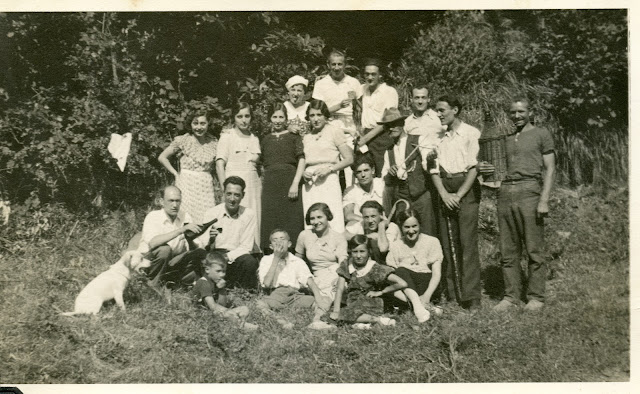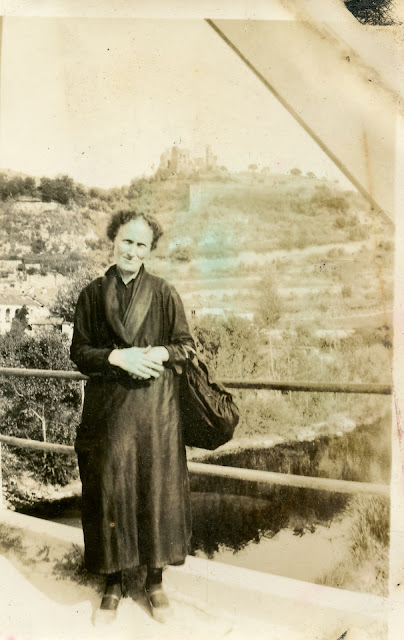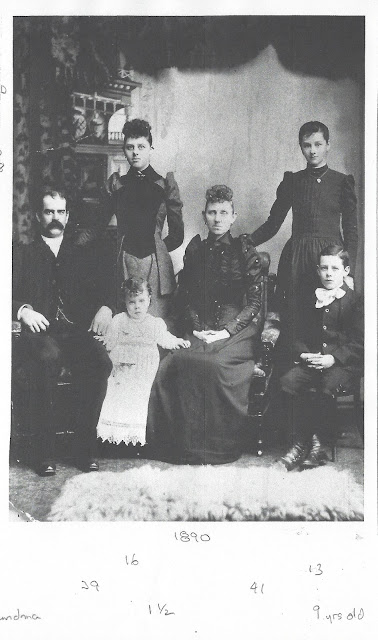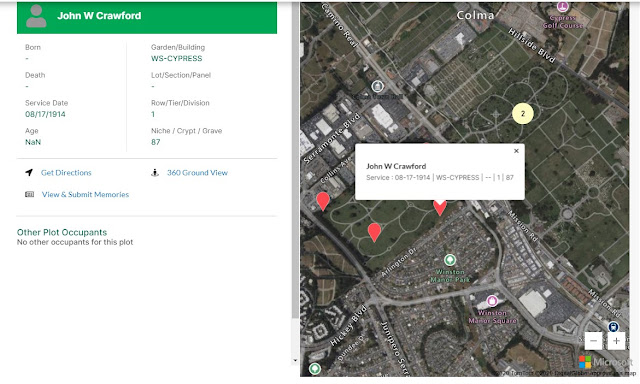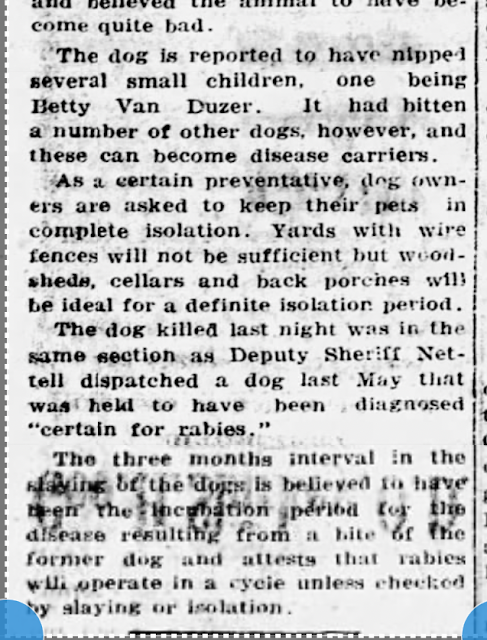John Washington Crawford
b. February 23, 1820 Philadelphia, Pennsylvania
d. August 15, 1914 San Francisco, California
Picture kindly shared with permission by BCrawford
John Washington Crawford was my great great great grandfather. I have been researching the Crawford family for the last several months and in that process I was able to connect with a dna cousin through Ancestry. Our common ancestors are John Washington Crawford and Sarah Byerly Crawford, which makes us 3rd cousins (once removed)! I shared pictures of the Crawford Family Bible and other documents with this Crawford family and they in turn shared the few pictures they had in their possession.
The above picture was shared with me; it can also be found on John Crawford's Find A Grave memorial which was added in April of this year. It looks like it was taken sometime in the 1880's. John Washington Crawford was in his 60's when this picture was taken and was still working as a teamster/drayman in San Francisco as of the 1880 census. His wife Sarah passed away in 1884.
By 1890 John was living on O'Farrell Street in San Francisco, working as a cigarmaker. At the age of 70 this job was much less strenuous than that of a drayman, driving a team of horses delivering goods around the city. But, he was still working. He could be found in the 1897 City Directory living on O'Farrell and working in the cigars and tobacco industry on Washington Street (2.5 miles from his home). The O'Farrell address was not the home of any of his relatives, so he must have been living alone, possibly in a boarding house of some type.
The first decade of the 1900's was a time of loss and change for John. His daughter Mary passed away in 1903. He must have experienced the Great 1906 Earthquake in some fashion, along with the rest of his family. Did he loose his home? His son George Byerly Crawford passed away in 1909 at the age of 58. By the 1910 census John was living with his daughter Sallie and her husband Franklin Hayes on Twenty Second Street. He quite possibly had been living there since the earthquake. He was in his 80's. He had worked hard all of his life to provide for his family and for himself. It was time to let others take care of him.
John Crawford passed away in 1914 at the age of 94. The last few years of his life were difficult, not only for himself, but for his remaining family. A diagnosis of senility brought about circumstances that landed him in the Home for the Incurables where he died on August 15. If John had been living in our modern times he might have been diagnosed with Alzheimer's or some type of dementia. Taking care of elderly parents can be one of life's greatest challenges, no matter if it was in the past, or if it is in the present. My great grandmother Sallie Hayes watched this reality unfold as she tried to take care of her aging father.
I was lucky enough to come across several letters written to my great great grandmother Sarah "Sallie" Crawford Hayes in 1911 and 1914.
The envelope that contained the letters to Sallie Hayes. Unknown handwriting. Found in the papers of Lester Hayes.
The letters were written by Sallie's granddaughters Emma Crawford Basney and Varena Crawford Pidwell. They were the daughters of George Byerly Crawford, Sallie's older brother. They give a sad glimpse of what John experienced and what the family was going through at this time. For whatever reason, Sallie (or someone else) thought the letters were important enough to keep.
The George Byerly Crawford Family
San Francisco, California 1890
George Byerly Crawford (left, seated) and Sarah Maddox Crawford (middle, seated). Emma is standing, aged 16 and Varena is standing, aged 13. George Dudley is seated on the right, aged 9. Clarence is the youngest, standing between his parents aged 1 1/2.
The George Byerly Crawford Family picture kindly shared with permission by BCrawford.
John Washington Crawford was found on the 1910 census living with Sallie and Franklin Hayes in their home on Twenty Second street in San Francisco. Taking care of elderly parents was a common expectation of children years ago, so it is not surprising to find John in the home of his daughter by this time. But, caring for an aged parent can become emotionally and physically draining fairly quickly. The hard truth is that it can be challenging, stressful and at times overwhelming. I believe Sallie was dealing with this situation, as by 1911 she felt the need to put her father into an institution of some sort in the city. She probably came to the conclusion that she could not care for her father at home. Was his state of mind to difficult to deal with? Was he physically sick? Was he apt to wander? Did he become a danger to himself or the family? There are not enough clues in the letters! Her granddaughter Emma tried to visit Sallie to assess the situation which in turn caused tension in the family. Emma wrote two letters trying to mend fences with her grandmother.
Emma had visited her grandfather in this place (we don't know what institution he was in the first time), possibly without letting Sallie know first which immediately caused friction. Emma was not invited to Sallie's home after that, so Emma wrote a letter relating what she experienced on that visit and what her concerns were...
Letter written by Emma Crawford Basney October 6, 1911 to Sallie Crawford Hayes. Page 2 front.
"Did you know he was about eaten up with body lice while out there. I couldn't understand why Grandpa looked so shabby until they told me they had to burn his clothes on account of the lice. They stopped me from sitting on his bed for fear I might get them. My heart ached for him."
Emma went on to say she felt the grandchildren shouldn't interfere in the situation but that her heart ached for her grandfather. She understood that a complaint had been filed at the office (presumably at the institution where John was for several months) but she hadn't heard that anything had come of it. She hoped that Grandpa wouldn't be away for very long. She even offered to help if Sallie needed a break when he came back home.
Letter written by Emma Crawford Basney October 6, 1911 to Sallie Crawford Hayes. Page 3.
"I trust Grandpa is well and that he will give you no trouble. If at any time you wish to go away and I am going to be at home I will keep him for you."
She ended her first letter with the sentiment that she hoped "You and Uncle Frank would never have to go through what Grandpa has in the past three months".
In Emma's letter written on December 18, 1911 it looked like John was back at home. Emma was still willing to "let bygones be bygones" and mend the relationship with her grandmother; it appeared that Sallie was not ready to talk things over.
Letter written by Emma Crawford Basney to Sallie Crawford Hayes December 18, 1911. Back.
On July 19, 1912 John was admitted to the Home of the Incurables in San Francisco. The home took its name from the International Order of King's Daughters which was an international Christian organization started in New York in 1886. The home in San Francisco began in 1890. A newspaper article from 1895 described the home and how it worked, as well as the high demand for services. (The high demand for elderly care still holds true today). It may have been located on Francisco Street and then moved to Golden Gate Avenue until 1917. It was described as a home for those suffering from "incurable diseases other than contagious". It was open to all denominations and when the family was able to pay they were charged $10-$14 per month. We do not know the conditions John experienced in this home, but he died there in 1914.
Lester Hayes provided information for John's death certificate. He was Sallie's son, and my great grandfather. This document was ordered by my Auntie Claire in the 90's when she was doing her research on the family.
The feud between Sallie and her granddaughters continued, as the next letter, written by Rena, was written after John died. Apparently Sallie did not inform Rena that her grandfather had died and Rena did not find out until she read it in the newspaper. Rena wrote that "...it is a source of great regret to us all, that we were thus deprived of the privilege of at least paying our last respects".... That letter was written August 23, 1914.
When reading through these letters it appears that Sallie did not deal with her granddaughters in a very loving manner (hence I won't publish the letters in their entirety). It was a very private and personal feud. Maybe Sallie did not like other family members interjecting their opinions on the care she was providing or with her choice to move her father out of the home. Did she feel guilt for moving him? Fulltime caregivers sometimes experience burnout which can cause feelings of being overwhelmed, sleep disturbances, resentment or anger, loss of patience and social withdrawal. Was Sallie experiencing these symptoms? There are so many possibilities arising from this situation, and we will never know all the details. All we can do is extrapolate from the evidence and treat the situation with sympathy. It is my hope that relationships were eventually repaired.
John Washington Crawford's Obituary. This was glued to the top of Rena's letter dated August 23, 1914.
These were in the possession of Lester Hayes, my great grandfather. John Washington Crawford was buried at Cypress Lawn Cemetery in Colma, California.
https://cypresslawn.com/resources/memorial-park-resources/locate-a-gravesite/
https://cypresslawn.com/resources/memorial-park-resources/locate-a-gravesite/
Researching ancestors who experienced hard times in their life can be emotionally difficult. We feel sympathy for family members and can often relate to the situations they were in. Many of the issues that occurred over 100 years ago remain the same today. All we can do is work to analyze the data and interpret it in such a way as to understand the situation more fully. And, learn from the past. It remains a part of our own, unique family history.
References:
The Charities of San Francisco: A Directory of Benevolent and Correctional Agencies. Prepared by C.K. Jenness, M.A. Published for the Department of Economics and Social Science, Leland Stanford, Jr. University, 1894 Google Books
The King's Daughters Home for the Incurables by Dan Brekke Nov. 29, 2011 Infospigit: The Chronicles. https://infospigot.com/2011/11/29/the-kings-daughters-home-for-incurables/
Relationship Reference:
Me->Margaret Hansen Boothby->Margaret (Betty) Hayes Hansen->Lester Hayes->Sarah "Sallie" Crawford Hayes->John Washington Crawford and Sarah Byerly Crawford


